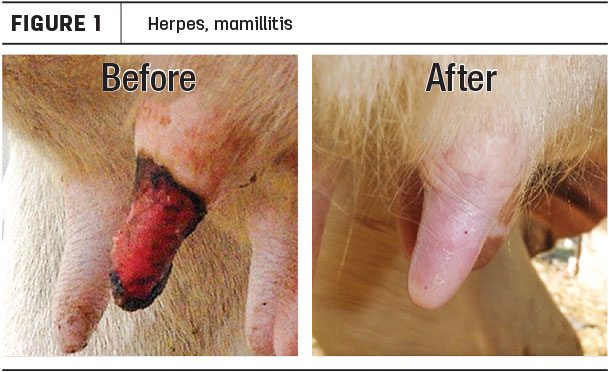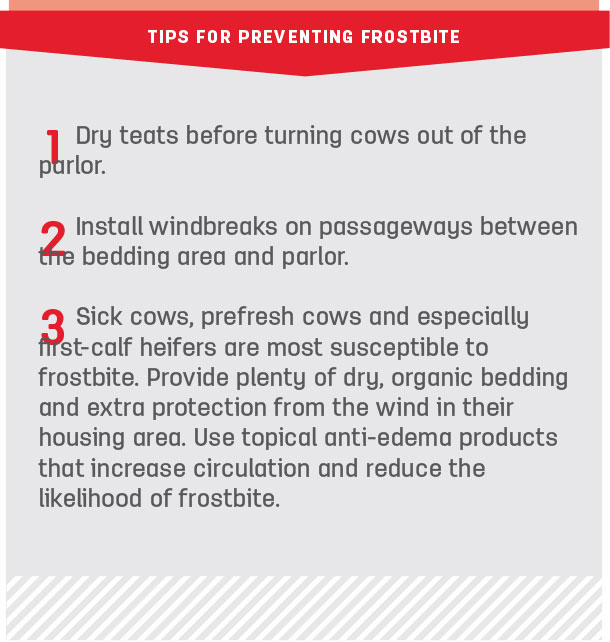Teat-end frostbite can become an issue when wind chill temperatures drop below zero. If frostbite is noticed, promptly thaw the tissue with warm water – 105 to 110ºF. Thawing at this warmer temperature is more painful but will result in less tissue damage.
Conventional thinking has it that treatment is usually ineffective because the injury is rarely noticed before irreparable damage has been done. Once the injury occurs, there is a “race” that begins between the healing process and the onset of mastitis. Mastitis usually wins that race. The end result is normally a lost quarter and often a culled cow.
It is possible to have a more desirable outcome to this type of injury. Wound management requires keeping the site as free as possible of pathogens and at the same time facilitating the healing process. Many common antiseptic agents have the undesirable effect of slowing the healing process.
Skin damage heals approximately 40 percent faster when the wound is kept moist. It’s important to avoid applying agents that inhibit the healing process or that have a drying effect on the wound site; iodine is one of the worst offenders on both counts. Complete healing of a frostbite case can take 60 days.
Milking will usually cause some re-injury and pain to the healing tissues. Clean the teat with a mild soap and water solution before milking. Post-milking, apply an ointment or salve with antiseptic properties that does not inhibit healing and has good barrier properties.
Suggestion: Omit post-dipping if you are confident that the topical product you are using is indeed germicidal. Most frostbite injuries involve the teat end. If you can maintain a moist teat end until the next milking, it will eliminate the need to remove a scab from the teat end prior to milking. This scab removal is unpleasant for the cow and perhaps dangerous to the person milking.
Honey works well on teat injuries: It has antiseptic properties, it stimulates healing and will keep the skin hydrated. Bandaging the teat when using honey will definitely increase its effectiveness.
An often-overlooked aid in treating teat injuries is the use of a topical menthol/anti-edema product on the affected quarter during the healing process. Those products stimulate circulation in the udder and to the teat and, consequently, facilitate the healing process.
Keeping the teat edema-free dramatically improves the prognosis. Note: A hard teat equals mastitis. Caution: Don’t apply mint/menthol products to the wound site – it burns.
Udder edema predisposes the cow to frostbite. Consistent use of topical anti-edema products is helpful, especially in prefresh heifers.
 Herpes mammillitis lesions are sometimes mistaken for frostbite. Herpes is somewhat seasonal, just like frostbite. Treatment protocol is similar. Using a topical product with anti-viral properties will be helpful.
Herpes mammillitis lesions are sometimes mistaken for frostbite. Herpes is somewhat seasonal, just like frostbite. Treatment protocol is similar. Using a topical product with anti-viral properties will be helpful. ![]()
Gary Steuart is with Steuart Laboratories. Email Gary Steuart.








